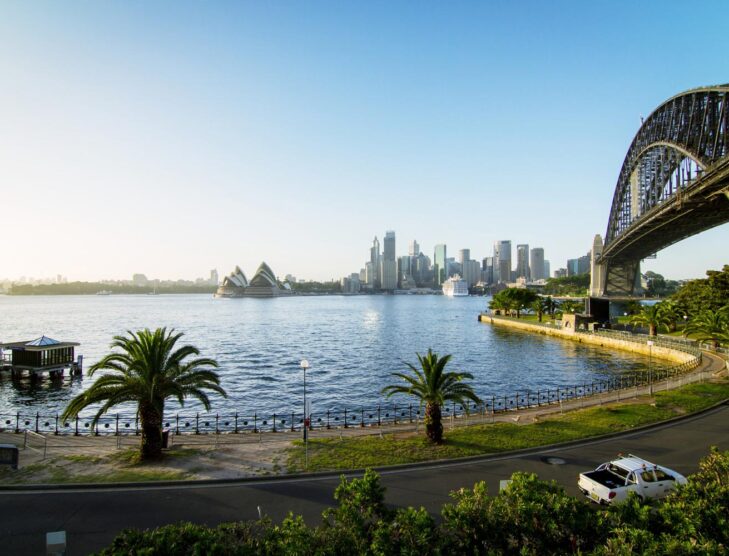
Australia considers move to Euro 6/VI
Australia first implemented noxious emissions standards for light petrol vehicles in the early 1970s to restrain vehicle pollutants. Regulation on diesel vehicles was established in the mid-1990s as diesel vehicles steadily gained acceptance with private buyers. Australian Design Rules (ADRs) dictate the minimum requirements for vehicle safety, environmental performance, and anti-theft protection for light passenger and commercial vehicles.
The current Euro 5 emission standards were introduced for newly approved light-duty models from November 1, 2013, and for all light vehicles manufactured from November 1, 2016. For heavy vehicles, Euro V standards apply to all vehicles manufactured from January 1, 2011, and to newly approved models first manufactured from January 1, 2010.
Euro VI was introduced for heavy vehicles in the European Union from the end of 2012. The passenger car equivalent, Euro 6, was implemented in September 2014. Euro 6d, the latest iteration, improves the integrity of the vehicle testing regime and has a first registration date of January 2021 — following an initial temporary registration period. Most developed countries have already adopted Euro 6, or equivalent, standards for passenger cars including the United States, Canada, United Kingdom, Japan, China, South Korea, and India. Australia is at risk of being left behind.
The move from Euro 5 to Euro 6 mandates a 55% reduction in emission limits for oxides of nitrogen (NOx) in light diesel vehicles, a particle number limit to reduce fine particle emissions from direct injection petrol vehicles, and tighter thresholds for on-board diagnostic systems. Euro VI requires an 80% reduction in NOx, a 66% reduction in particulate matter, and a more representative engine bench test and new on-road emissions test.
Australia is considering a move to Euro 6/VI. In October 2020, the Department of Infrastructure, Transport, Regional Development and Communications released two draft Regulation Impact Statements on the possible introduction of Euro 6 and Euro VI. The department is seeking feedback from stakeholders by February 26, 2021.

The draft Regulation Impact Statement (RIS) for Euro 6 contemplated several options to reduce noxious emissions from new light road vehicles. Options included leaving existing regulation and market forces to provide a solution or “business as usual”; influencing vehicle purchasing decisions in the Australian Government fleet; encouraging vehicle manufacturers to agree with the Australian Government to meet increased minimum noxious emissions performance requirements, and mandating Euro 6 under the Road Vehicle Standards Act 2018. Euro VI options included a “business as usual,” a voluntary standard that encouraged improved emissions performance, and mandating Euro VI.
Considering a shift to the latest Euro emissions standard follows the recent adoption of new fuel quality standards in Australia on February 25, 2019. The updated fuel standards will see sulphur levels fall to 10 parts per million (ppm) and align sulphur content with limits in other leading nations. However, the implementation date of July 1, 2027 has been met with some backlash. The Australian government claims the timing strikes a balance between public health and providing Australia’s petroleum refining sector with the necessary preparation time and certainty around investment decisions. Quality of petrol is a technical barrier for a potential shift to Euro 6 as higher sulphur and aromatics limits can create vehicle operability issues, such as contaminating catalytic converters in modern vehicles.
The RIS requested feedback on a possible earlier implementation of Euro 6 for diesel vehicles. Diesel engines dominate the commercial segment of the light vehicle market in Australia — accounting for more than 93% of light commercial vehicle sales in 2019 versus 41% in 2005. Diesel fuel in Australia is already of sufficient quality to allow for the implementation of the new standard. The government department is also considering the option of Euro 6b as an interim step for light petrol vehicles.

While the draft document contends that the RIS does not constitute a decision on a shift to Euro 6 or Euro VI, the government department’s analysis confirms that the benefits of a transition significantly outweigh associated costs. Implementation of Euro 6d from July 1, 2027 would incur increased manufacturer capital costs of AUD1.1 billion (USD0.85 billion) over the period to 2050. The analysis estimates avoided health costs of AUD6.4 billion (USD4.93 billion) in the same period providing a net benefit of AUD5.3 billion (USD4.08 billion). A net benefit of AUD5,189 million (USD3,997 million) was outlined with a move to Euro VI. New regulation seems likely, with appropriate timing the likely consideration.
Australia has a competitive car market with more than one million new cars sold annually across 60 light vehicle brands and 400 models. However, this is a drop in the ocean in comparison to worldwide light vehicle sales of more than 95 million in 2018. Alignment with global standards is increasingly important for Australia to maintain pace with automotive technology advancements. Particularly since the doors closed on the Australian car manufacturing industry in 2017.
The RIS alleges that manufacturers have already raised concerns that current Australian vehicle emissions standards are making it more difficult to convince global parent companies to allocate next-generation engine technologies to the Australian market. This risk is likely to increase over time as other Euro 5 countries, such as Thailand, make the jump to the latest standards. 60% of vehicle models in Australia sell fewer than 1,000 units per year. Rather than add new safety, connected, or autonomous systems to older technology platforms, the impact statement suggests manufacturers may choose to withdraw vehicle models from the market. Admittedly, Euro 6 light petrol vehicles are already sold in Australia, although they are Euro 6b, not Euro 6d compliant.







